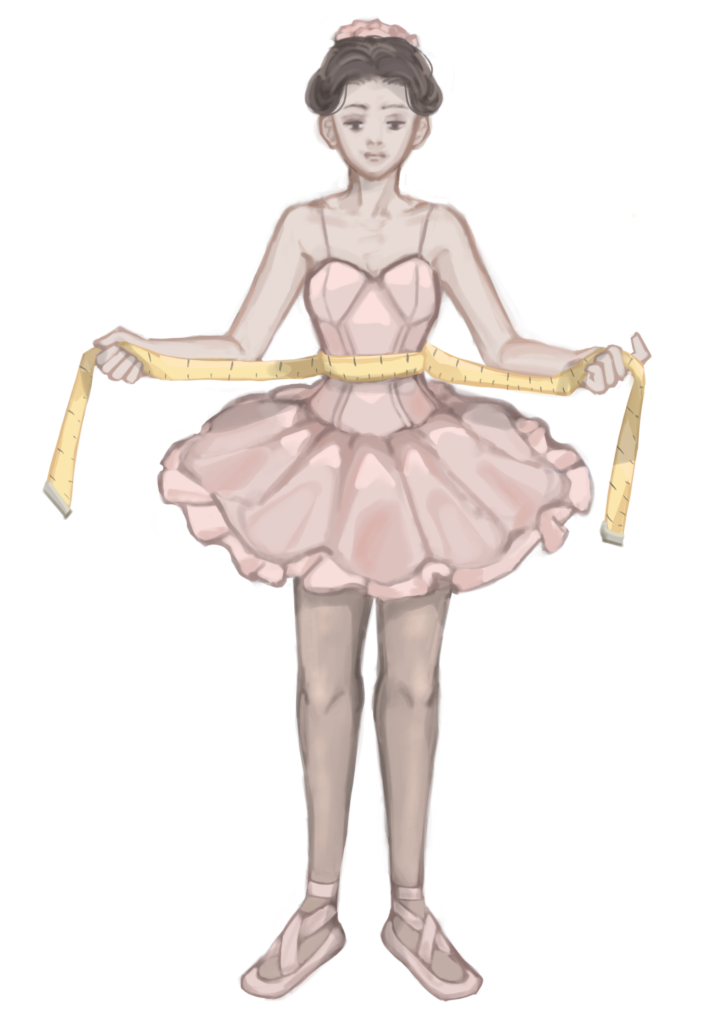
By Viviam Liao
Staff Writer
The Sugar Plum Fairy variation from the famous “Nutcracker”, often performed during the holiday season, is a perfect imitation of the generic image of a ballerina: A beautiful pink tutu wrapped around a slim body, paired with a sparkly tiara sitting snugly on top of a bun and small, dainty feet encased in a pair of lovely pointe shoes.
That’s the image that appears from a Google search for the word ballerina, and it always irks me that it’s what people envision me as when I introduce myself as someone that practices classical ballet.
They do not understand the insecurities that creep out when I’m facing the mirror and looking at my reflection.
Some days I feel disgusted with the way I look, my torso so thin that I can count my ribs.
The slender physique that many ballerinas have is not just a product of training. It’s a consequence of the eating disorders that develop from body dysmorphia when that ideal body is not achieved.
According to the New York Times, eating disorders such as anorexia nervosa and bulimia are common in middle and upper class women, occurring in one in 100 women. However, in classical ballet, the ratio is much bigger, occurring in one in five dancers.
Although many people critique that ballet dancers could simply regulate their eating habits to accommodate their lifestyle and exercise routine, it is not that simple. According to Dancewear Central and Jade Harrison School of Dance, a ballet dancer will burn around 428 calories every half an hour of dance.
Considering how professional dancers commit up to 10 hours of practice a day, the number is increased to 8,560 calories per day. That is almost equivalent to 23 normal cheeseburgers.
Ballerinas need to eat and consume enough fuel to maintain their energy levels. However, due to the body’s expectations, many dancers binge to satisfy their hunger, then immediately purge by induced vomiting from guilt and fear that they will lose the slim figure they worked so hard for.
For dancers, I encourage them to try and find comfort and satisfaction in their own skin. In order to find that, they should not compare themselves to others, for comparison begins to show the flaws instead of highlighting the improvements, such as increased strength and balance.
As a ballerina myself, I believe that the priority should be improving what is good rather than ruminating on the bad.
Instead of focusing on the body proportions of dancers, audience members should promote and praise them for their skills and grace. This way, dancers do not feel pressured to fit into the stereotype and begin unhealthy habits to achieve it.
